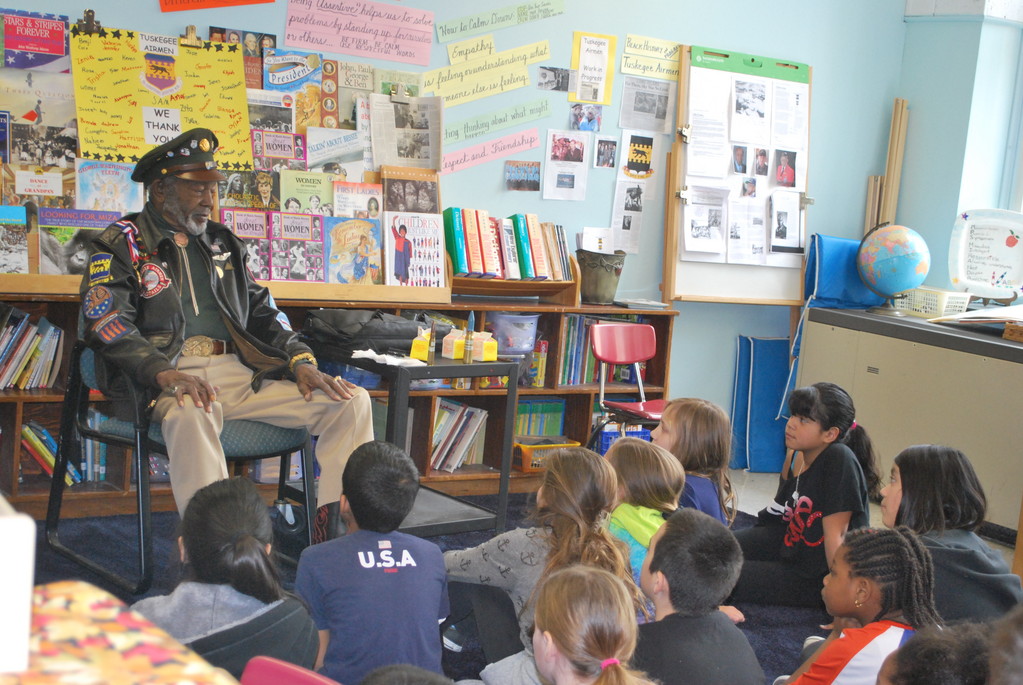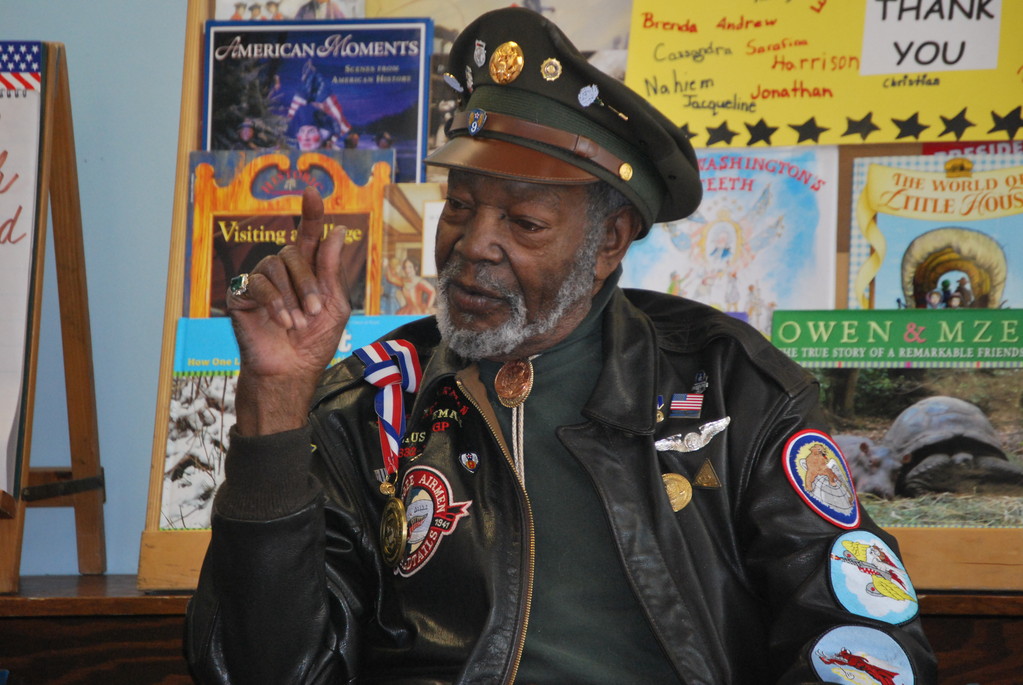History takes flight at Lawrence Middle School
Fifth-graders receive a visit from a Tuskegee Airman
First Julius Freeman gave the fifth-grade students at Lawrence Middle School a life lesson, “stay in school, get an education, then pick what you want to do in life,” then the 85-year-old former Tuskegee Airman medical technician gave the students a history lesson.
The Kentucky-born Freeman served as part of the famed group of black aviators during Word War II that played a major role in tearing down the wall of segregation, which existed in this nation.
Freeman, who now lives in Springfield Gardens, Queens, sat comfortably in a chair in room 249 of the middle school last Friday and told the students about the beginning of the Tuskegee Institute in Alabama founded by Booker T. Washington in 1881 and how the school for blacks grew from one building and 30 students to 161 buildings and 3,000 students 60 years later. It continues today as Tuskegee University.
“I was determined I was going to change my life,” Freeman said, about growing up poor and having to quit school to care for his mother. He joined the military at 17.
President Franklin D. Roosevelt decreed that an airstrip should be built in Tuskegee in 1940 and “people of color will be trained,” said Freeman, who added that Colonel Benjamin O. Davis, a graduate of West Point, who was black, took command of training these aviators. “We were determined to be successful and prove we can do anything better than anyone else,” Freeman said.
In explaining to these students that Davis stood up to all the isolation, eating alone, bunking alone and not having one person speak to him except to give Davis orders, Freeman painted a picture of the discrimination blacks faced then, including the bigotry he encountered.
“When I was discharged in November 1948, I was so angry that I threw away my uniforms,” Freeman said in response to a student asking him how difficult it was to remain patriotic despite the prejudice. Freeman said that throughout Europe he found people more welcoming than in his own country. “After all we did there was still segregation, the familiar ‘whites only’ signs and they were still hanging people of color in 1948-’49 and ’50,” he said.
The students who listened to Freeman had put together a Black History Month project about the Tuskegee Airmen in February. Sarafina Jean said that Freeman and his comrades remain a vital part of this country’s history. “They are very important because they helped us win the war and they suffered for us,” she said.
His initial words about getting an education had an impact on Nathalie Berrios. “Despite people being critical of you, you have to believe in yourself, then you can do what you want,” she said, about she learned from Freeman.
After the war, Freeman was the “first man of color” selling cars in Columbus, Ohio. Then he came to New York on Jan. 4, 1954 with $400 and found that there was no person of color selling cars in the five boroughs and Long Island. “I don’t need no porters here today,” was a response he received from one car dealer in Brooklyn.
He emptied trash cans for five months at the Empire State Building before finding a Hudson dealership that gave him a job selling cars. His career included designing cars for such celebrities as James Brown and Wilson Pickett, and being part of the Automobile Show at the New York Coliseum.
“I think they were important because they fought for the rights we have today,” Jacqueline Blyudoy said about the Tuskegee Airmen. “I learned that during the war they didn’t get much credit, but today they are recognized by the president,” Franklin Gonzalez said. “I learned that the Tuskegee Airman weren’t treated like real soldiers, but later on they were recognized for their bravery” Harrison Kim said.
Freeman left his youthful audience with food for thought. “I don’t like African American or all the other [labels], if you are an American citizen living a correct life then your nationality is American,” he said.

 41.0°,
Fair
41.0°,
Fair 







